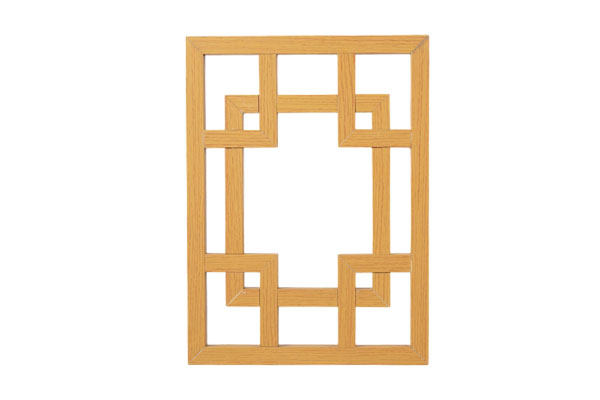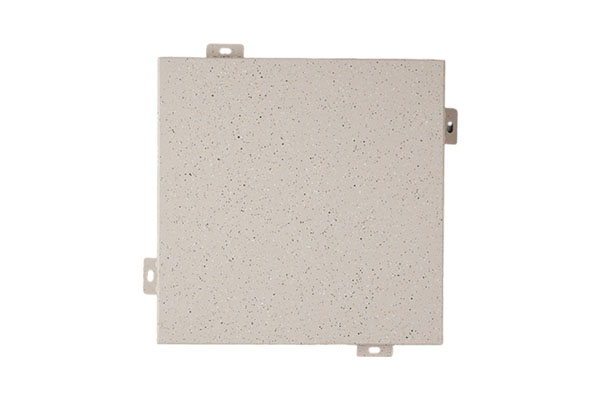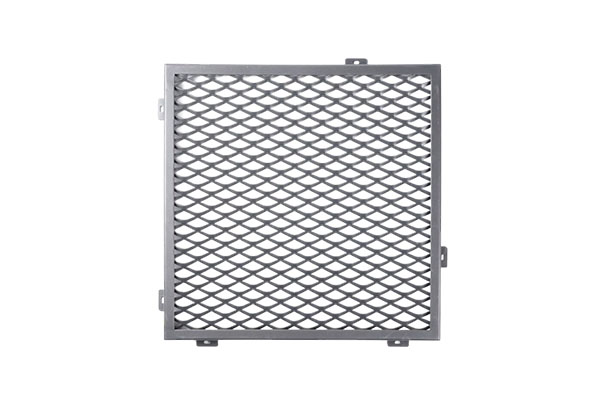How does imitation wood grain aluminum veneer perfectly replicate the texture of natural wood grain?
Release Time : 2024-12-18
Imitation wood grain aluminum veneer is a decorative material that uses a special process to create a natural wood grain effect on the surface of the aluminum plate. It not only has the characteristics of lightness, durability and easy maintenance of aluminum, but also can simulate the natural beauty of wood, and is widely used in indoor and outdoor decoration design.
1. Choose a suitable aluminum plate substrate
Material selection: Use high-quality aluminum alloy plates as the substrate, usually aluminum alloy plates with a thickness of 2mm to 4mm.
Surface treatment: According to design requirements, carry out corresponding surface treatment, such as spraying, powder coating or fluorocarbon paint spraying, etc., to increase the weather resistance and color richness of the plate.
2. Wood grain transfer technology
Transfer process: Use advanced wood grain transfer technology, such as high-temperature transfer, digital printing or screen printing, to accurately transfer the carefully designed wood grain pattern to the surface of the aluminum plate.
Texture simulation: Choose a high-resolution wood grain pattern to ensure that the details and layering of the wood grain are fully displayed, making the imitation wood grain effect more realistic.
3. Color matching and gradient
Color adjustment: Through the study of natural wood color, similar colors are precisely modulated, and uniform color coverage and gloss control are achieved through coating technology.
Gradient effect: Simulate the natural color changes and gloss changes of wood, and create a natural color gradient effect through multi-layer spraying and special baking paint process.
4. Texture processing
Texture depiction: Through mechanical embossing or other texture processing technology on the surface of the aluminum plate, a concave and convex texture matching the wood grain pattern is formed to enhance the real sense of touch.
Coating process: Using special coating technology, such as clear coating or translucent coating, the wood grain texture presents a three-dimensional sense and depth under light.
5. Customized design
Personalized pattern: According to customer needs, customized wood grain pattern design is provided to meet the needs of different scenes and styles.
Size and shape: Aluminum veneer can be cut into various sizes and shapes to adapt to complex building structures and design requirements.
6. Installation and maintenance
Easy installation: Aluminum veneer is light in weight and easy to install, and can quickly complete large-area decoration projects.
Easy maintenance: The surface of aluminum veneer is smooth, not easy to stain, simple to clean and maintain, and beautiful for a long time.
Through the comprehensive application of the above technologies and processes, imitation wood grain aluminum veneer can perfectly reproduce the texture of natural wood grain while ensuring performance, bringing a modern, natural and harmonious visual experience to modern architecture and interior design.
1. Choose a suitable aluminum plate substrate
Material selection: Use high-quality aluminum alloy plates as the substrate, usually aluminum alloy plates with a thickness of 2mm to 4mm.
Surface treatment: According to design requirements, carry out corresponding surface treatment, such as spraying, powder coating or fluorocarbon paint spraying, etc., to increase the weather resistance and color richness of the plate.
2. Wood grain transfer technology
Transfer process: Use advanced wood grain transfer technology, such as high-temperature transfer, digital printing or screen printing, to accurately transfer the carefully designed wood grain pattern to the surface of the aluminum plate.
Texture simulation: Choose a high-resolution wood grain pattern to ensure that the details and layering of the wood grain are fully displayed, making the imitation wood grain effect more realistic.
3. Color matching and gradient
Color adjustment: Through the study of natural wood color, similar colors are precisely modulated, and uniform color coverage and gloss control are achieved through coating technology.
Gradient effect: Simulate the natural color changes and gloss changes of wood, and create a natural color gradient effect through multi-layer spraying and special baking paint process.
4. Texture processing
Texture depiction: Through mechanical embossing or other texture processing technology on the surface of the aluminum plate, a concave and convex texture matching the wood grain pattern is formed to enhance the real sense of touch.
Coating process: Using special coating technology, such as clear coating or translucent coating, the wood grain texture presents a three-dimensional sense and depth under light.
5. Customized design
Personalized pattern: According to customer needs, customized wood grain pattern design is provided to meet the needs of different scenes and styles.
Size and shape: Aluminum veneer can be cut into various sizes and shapes to adapt to complex building structures and design requirements.
6. Installation and maintenance
Easy installation: Aluminum veneer is light in weight and easy to install, and can quickly complete large-area decoration projects.
Easy maintenance: The surface of aluminum veneer is smooth, not easy to stain, simple to clean and maintain, and beautiful for a long time.
Through the comprehensive application of the above technologies and processes, imitation wood grain aluminum veneer can perfectly reproduce the texture of natural wood grain while ensuring performance, bringing a modern, natural and harmonious visual experience to modern architecture and interior design.







